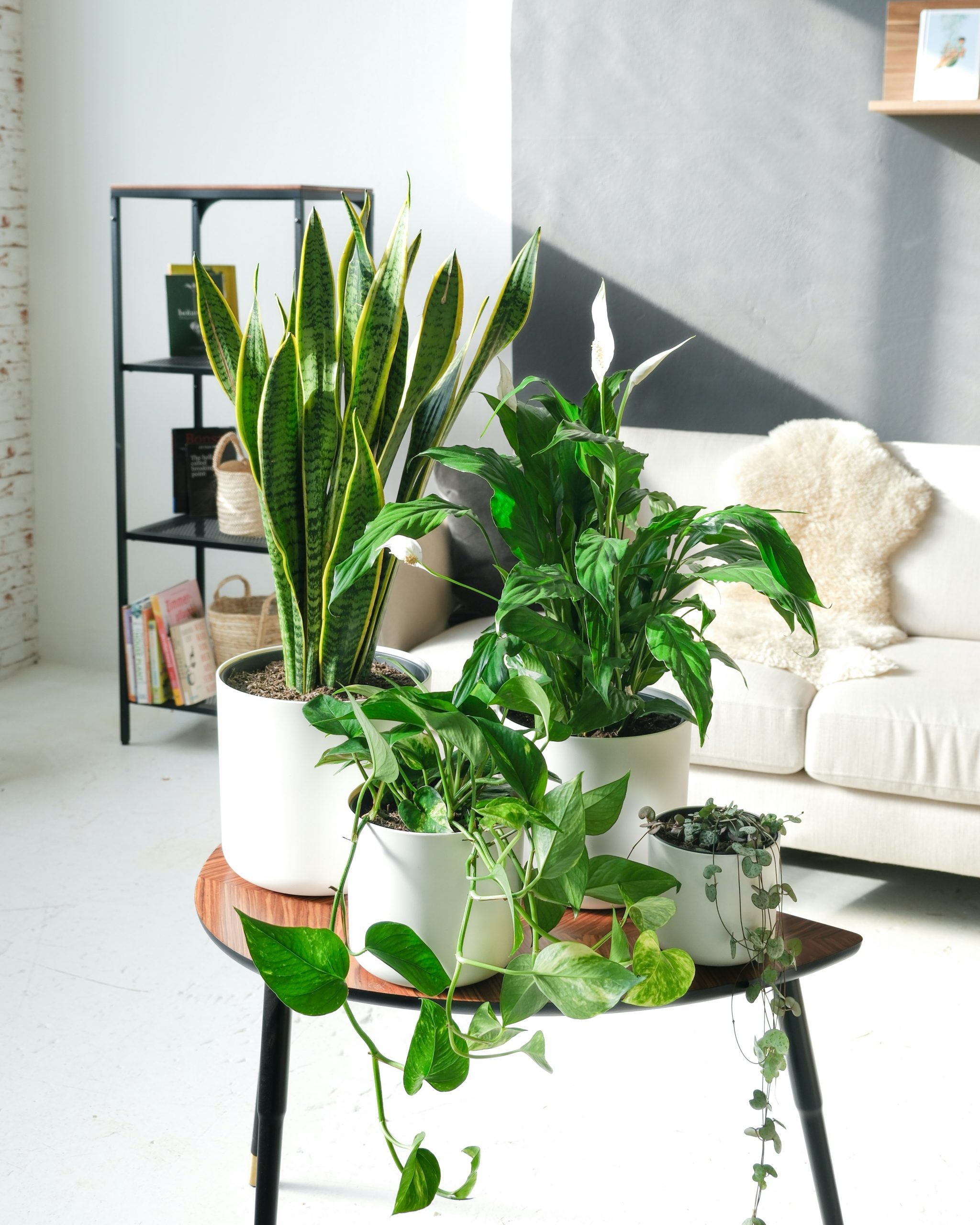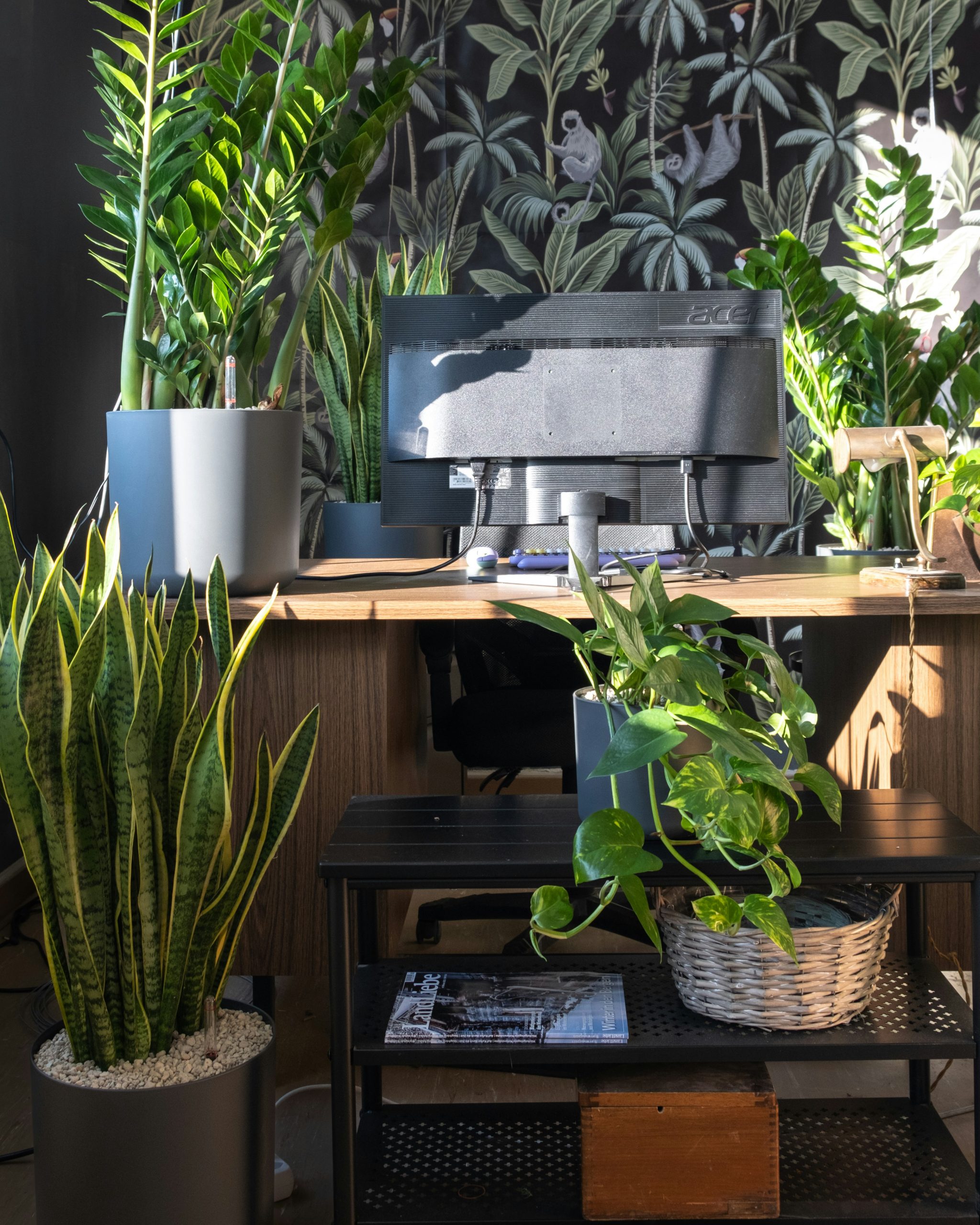Houseplants are more than just decorative elements—they bring life, color, and a sense of calm to your home. But if you’ve ever owned a plant that withered despite your best efforts, you know that keeping them healthy requires a bit of knowledge and care. Whether you’re a seasoned plant parent or a beginner, this guide will help you master the art of houseplant care.
1. Choose the Right Plant for Your Space
Not all plants are created equal, and some are better suited to indoor environments than others. Before buying a plant, consider:
– Light conditions: Does your space get bright, indirect light, or is it more shaded? For example, succulents and cacti thrive in bright light, while pothos and snake plants can tolerate low light.
– Space: How much room do you have? Some plants, like fiddle leaf figs, grow tall, while others, like spider plants, spread out.
– Maintenance level: If you’re a beginner, start with low-maintenance plants like ZZ plants, snake plants, or philodendrons.
—
2. Provide the Right Amount of Light
Light is crucial for photosynthesis, but too much or too little can harm your plants. Here’s a quick guide:
– Bright, indirect light: Place plants near east or west-facing windows. Examples include monstera, rubber plants, and bird of paradise.
– Low light: Perfect for spaces with minimal sunlight. Snake plants, ZZ plants, and peace lilies are great options.
– Direct sunlight: Only a few plants, like succulents and cacti, can handle direct sun for long periods. Be cautious, as too much direct light can scorch leaves.
—
3. Water Wisely
Overwatering is the #1 killer of houseplants. Here’s how to get it right:
– Check the soil: Stick your finger about an inch into the soil. If it feels dry, it’s time to water. If it’s still moist, wait a few more days.
– Drainage is key: Ensure your pots have drainage holes to prevent water from pooling at the bottom, which can lead to root rot.
– Adjust for seasons: Plants generally need less water in winter when growth slows down.
—
4. Maintain Proper Humidity
Many houseplants, especially tropical varieties, thrive in humid environments. Here’s how to keep them happy:
– Mist your plants: Use a spray bottle to mist the leaves regularly.
– Use a humidifier: This is especially helpful in dry climates or during winter.
– Group plants together: Plants release moisture through transpiration, so grouping them can create a mini-humid microclimate.
—
5. Fertilize Regularly
Plants need nutrients to grow, and potting soil alone won’t provide enough over time. Here’s what to do:
– Use a balanced fertilizer: Look for a general-purpose houseplant fertilizer (e.g., 10-10-10 NPK ratio).
– Follow instructions: Over-fertilizing can harm your plants, so stick to the recommended dosage.
– Fertilize during the growing season: Spring and summer are the best times to feed your plants. Reduce or stop fertilizing in fall and winter.
—
6. Prune and Clean Your Plants
Regular maintenance keeps your plants healthy and looking their best:
– Remove dead leaves: Trim yellow or brown leaves to encourage new growth.
– Prune leggy stems: Cutting back overgrown stems helps plants grow fuller.
– Clean the leaves: Dust can block sunlight, so wipe leaves with a damp cloth or give them a gentle shower.
—
7. Watch for Pests and Diseases
Even indoor plants can fall victim to pests like spider mites, aphids, or mealybugs. Here’s how to protect them:
– Inspect regularly: Check the undersides of leaves and stems for signs of pests.
– Isolate affected plants: If you spot pests, move the plant away from others to prevent spreading.
– Treat promptly: Use insecticidal soap, neem oil, or a homemade solution (e.g., water and dish soap) to eliminate pests.
—
8. Repot When Necessary
As plants grow, they may outgrow their pots. Here’s how to know when it’s time to repot:
– Roots are crowded: If roots are growing out of the drainage holes or circling the pot, it’s time for a bigger container.
– Soil dries out quickly: This can be a sign that the plant has outgrown its pot.
– Choose the right soil: Use a high-quality potting mix suited to your plant’s needs (e.g., cactus mix for succulents, peat-based mix for tropical plants).
—
9. Learn Your Plant’s Language
Plants communicate their needs through their appearance. Here’s what to look for:
– Yellow leaves: Often a sign of overwatering or poor drainage.
– Brown tips: Could indicate low humidity or over-fertilizing.
– Drooping leaves: Usually a sign of underwatering or too much direct sunlight.
—
10. Be Patient and Observant
Every plant is unique, and it may take time to understand its specific needs. Pay attention to how your plant responds to care adjustments, and don’t be afraid to experiment. Remember, even the most experienced plant parents have lost a plant or two along the way!
—
Final Thoughts
Taking care of houseplants is a rewarding hobby that brings beauty and tranquility to your home. By providing the right light, water, and care, you can create a thriving indoor jungle. Start small, learn as you go, and soon you’ll be a confident plant parent with a home full of lush, healthy greenery.
Happy planting! 🌿








